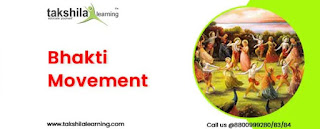Bhakti Movement NCERT Class 12 History
The Bhakti movement was an effort to achieve salvation and emancipation by devotion to God. In Hindi, the word bhakti refers to fervent devotion to God.
This movement, which stressed a single-minded, ardent devotion to God, is seen as the most characteristic act of religious progress during the Middle Ages.
In the 12th and 13th centuries, Kabir Das was a key figure in the Bhakti Movement. As a result of the movement, Kabir Das' poems and religious writings attained widespread fame. Kabir Das was raised up by a Muslim family. However, his religious beliefs were influenced by his Hindu teacher Ramananda, who regarded Rama as the highest God.
The first Sikh guru and the founder of Sikhism was Guru Nanak. He vehemently opposed prejudice based on customs, rivalry, and caste in religion. Nanak was raised in a Hindu household and from an early age began to exhibit spiritual tendencies. He helped the indigent and underprivileged. His followers began referring to themselves as Sikhs, and Sikhism was born.
Bhakti saint Chaitanya Mahaprabhu lived in the 15th century and was seen by some to be the conjoined avatar of Radha and Krishna. The way Chaitanya worshipped Krishna via ecstatic song and dance had an impact on Bengal's religious beliefs.
In their teachings, Kabir and Guru Nanak espoused devotion to a Nirankar form of God, or formless God. Chaitanya advocated devotion to an all-virtuous personified form of God known as the Sakar form, which was centred on the worship of Rama and Krishna, who were considered to be manifestations (avatars) of the Lord Vishnu.
Click to know Principles of the Bhakti Movement

Comments
Post a Comment
Thank you we will contact ASAP.